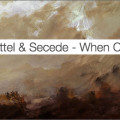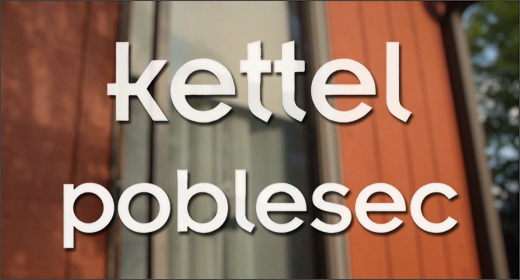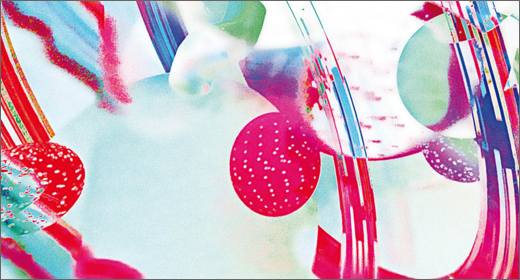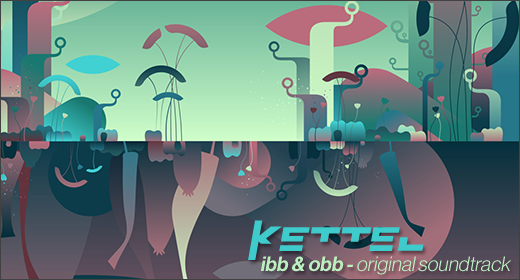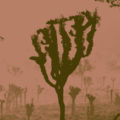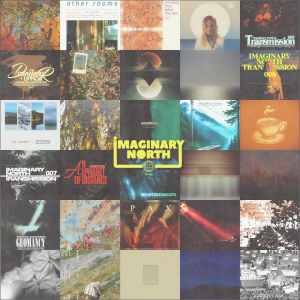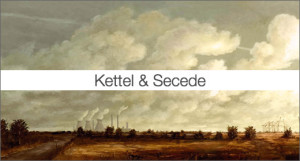 REIMER EISING & LENNARD VAN DER LAST both share a mutual love of big, bold, ambient soundscapes fused with memorable, melodic hooks and, having worked together already on Secede’s runaway success, Tryshasla, and numerous remixes it seems like an obvious partnership. Rumors of a Kettel & Secede collaboration were circulating long before Sending Orbs temporarily went dormant in 2010, but once that happened, many worried that it would never actually happen. So when did the collaboration that produced When Can, the latest release on the newly re-launched label really begin, and what in particular was it that finally prompted it?
REIMER EISING & LENNARD VAN DER LAST both share a mutual love of big, bold, ambient soundscapes fused with memorable, melodic hooks and, having worked together already on Secede’s runaway success, Tryshasla, and numerous remixes it seems like an obvious partnership. Rumors of a Kettel & Secede collaboration were circulating long before Sending Orbs temporarily went dormant in 2010, but once that happened, many worried that it would never actually happen. So when did the collaboration that produced When Can, the latest release on the newly re-launched label really begin, and what in particular was it that finally prompted it?
Reimer :: The idea of really going forward and releasing a collaboration took off at the start of 2012 when we decided to reinvigorate Sending Orbs and use this release as a kickoff. Since we’ve known each other we’ve always been working together on music, but we never released any of it (except for some remixes) so it was kind of a natural thing for us to do.
Igloo :: Which prompts another question: exactly how much of this Kettel & Secede material actually exists?
Reimer :: I think I should mention all the years that we’ve actually collaborated here and there, and worked towards finding a style and getting used to each other’s work, which is over seven years. Tons of half-finished/finished work was never used on the album because it didn’t fit anymore.
Igloo :: When Can bears the distinctive hallmarks of both artists styles: that atmospheric, sample-filled, sun-drenched, rainforest or tropical lushness of a Secede production and the playfulness, eccentricity, melodic wit and eclectic charm of a Kettel album, and yet the final result is possessed of its own unique character. Was it a conscious decision to try and avoid the end product sounding too much like either of their solo works?
Reimer :: We didn’t set any ground rules, but I think after working on it for a while we both developed some kind of unspoken notion that we wanted to create something different; not just an obvious mix between our styles, but a new organism. Most people would actually be surprised that a lot of the melodic wit and playfulness actually came from Secede, while I did my fair share of atmospheric rain-forest lushness. I think that’s the main reason it sounds ‘different’ to most: there was no task-division, really.
Igloo :: So how did the collaboration work?
Reimer :: The process was basically a matter of sending sketches back to back, adding layers, changing, mutating, working towards an arrangement. This could go on for months, sometimes. Usually one of us would start with the basis, the idea of the song, and from there it would become a lifeform of its own.
Igloo :: Full of delicate nuances and subtle melodic interplay, repeated listens to When Can reveal something new in the mix every time. In the tightly edited five minutes of the extraordinary “Kirsten” alone you’ll find slide guitar, acoustic guitar, orchestral strings, several strain of choral vocals, male and female vocals, natural percussion and Mediterranean influences. How did the collaborative process work when it came to balancing the mixture of elements on When Can?
Reimer :: Balancing was definitely one of the more challenging things. We completely went to town with the details and different elements that all somehow had to fit in the song. I mean, it’s really a big soup brewed by both of us: it’s hard to say where someone’s influence stopped and the other’s began. We both have the tendency/bad habit to keep on adding stuff to a mix, so this was a natural, collaborative thing.
It’s elementary to the quest of making a track sound magical, like something you want to hear over and over again. We were often laughing about it, too: “Another choir, another bass guitar. More choral vocals, more animal sounds, we need even more choirs, let’s add some castagnettes, we need a loud saxophone on top!!!”
Igloo :: At a modest fifty-one minutes, it’s a satisfying but concise work that seems to be over all too quickly, leaving a strong desire for more. Is When Can destined to be a solitary Kettel & Secede production, or can we expect more in the future?
Reimer :: It seems like we have confused some fans with this album, which was expected and actually a good thing. We hope to finish some new solo work soon, but we’ll sure be collaborating again. The process was just too much fun and rewarding not to. Now, when I’m struggling on a solo track that seems to go nowhere, I find myself thinking “I wish I could send this to Len so he can breathe some life into it”.
Igloo :: It feels like a very long time since we heard music like this, long enough that it feels both warmly nostalgic but also like a fresh, new beginning. It feels even longer since the last full-blown Secede release. Tryshasla is cited by many as a classic in its genre, fetching far more on the eBay/Discogs market now than albums by pioneers like The Orb or Future Sound Of London. Did Lennard anticipate any of this when the album first came out?
Lennard :: No, not at all. While it’s flattering, I think the prices they’re going for are ludicrous. I personally wouldn’t pay half that amount for a record—any record.
Igloo :: And is there any particular reason for the long silence?
Lennard :: No reason in particular. I just haven’t gotten around to it, really. I’ve grown to be pretty fussy with what I put out though, and I like to keep music on the shelves for quite a while to see how it evolves with me over time.
Igloo :: Tryshasla has long been out of print, and Secede’s underrated debut album Bye Bye Gridlock Traffic on the now legendary and sorely missed Merck label is, if anything, even harder to track down. With Sending Orbs entering the solar system once again, is there any chance of a repressing of either of these two albums in the near or distant future?
Lennard :: There’s been vague plans for a Tryshasla repress. As for the first album, I doubt a repress will ever happen.
Igloo :: So what was it that inspired them both to make music in the first place, and how did they arrive at their distinctive sonic aesthetic?
Reimer :: I’ve just always done it, from being a small kid, with whatever means.
It’s hard to tell why I arrived to sound like I do. Quite simply, we probably just make what we like, right? I guess every impression of your entire life goes into the brain, it shakes it around, makes a million cross-references, and then at some point you tend to make a certain type of music.
Lennard :: It’s something I’ve been interested in since I was little. As to why it sounds the way it does, I don’t know. I’ve never given it much thought, really. I’m simply attempting to give shape to what’s inside my head.
Igloo :: What have they been listening to lately and does it influence their own music in any way?
Reimer :: Yes I’m sure it does. It’s hard to say how, though. When you hear new, interesting music it broadens your horizon and probably gives you a few new ‘tools’ to work with. The pre-album mix we did in august (When Can flavors) is a good example of what we were listening to while making/pre-making this album. There’s so much good music on every level of every genre, it can be exciting to explore.
Igloo :: That same mix indicates a seriously eclectic taste in music. Did that spring from any one event or experience in particular?
Reimer :: I don’t think it had a concrete ‘start’ really. I’ve simply never excluded any music. I’ve always been able to enjoy stuff from all over the map. That doesn’t mean I like everything, obviously, I’m just impartial, or try to be at least. The appeal of art is separated from the genre it’s in or the name you give it. I can’t think of any music I will not give a chance at some point. That isn’t exclusive to music though, rather a general attitude I’ve developed towards any art basically.
Igloo :: The musical landscape has changed substantially since those early years of Kettel and Secede releases, spawning any number of new, and in particular dark, moody musical sub-genre, huge swings in the way music is promoted, released and purchased, the technology involved in its creation and the musical community as a whole. What are their thoughts on the current musical climate, and is there anything that particularly excites or worries them about it all?
Reimer :: I’m getting a bit out of touch. Although there’s usually something good in everything, there’s a lot of contemporary electronic music, a lot of sub-genres, that just sound badly made to me. Tons of copycats around too. I do understand the appeal of something like trapbeat, though. I just can’t imagine myself listening to it really.
In terms of industry-climate things are obviously changing fast. It saddens me that it has become so uncommon to buy music. But I can’t, and won’t fight it. It’s how it is, now. I’ve always been pretty liberal about piracy, but when a new album you’ve worked on all year pops up on hundreds of pirate sites literally two hours after release, it’s just plain disrespectful I think.
Igloo :: How do they feel their music has evolved over the years?
Reimer :: Uploading my back catalog to Bandcamp recently gave me lots of opportunity to listen to some old stuff. I think the last five years have been slightly more about technical evolution, where the first five years were primarily a search for a sound. One of the things I find myself still doing is trying to make a ‘better’ My Dogan/Myam James-type song, which is basically a type of music I’ve started making back in 2004/5.
Most of the evolution is in the comfort I have found in the means to create music, resulting in better compositions and a better sound, I think.
Igloo :: Not only can one Kettel album sound wildly different to the next (compare Volleyed Iron to Cenny Crush or Smiling Little Cow for instance) but typically the smorgasbord of sounds on any one album can be even more eclectic. This attracts a similarly eclectic and fickle fan base, a large proportion of which seem to be desperate for the next My Dogan. Is that something that ever factors in to Kettel’s work when creating a new album?
Reimer :: It’s true. Being active in a wide musical field guarantees you’re going to disappoint some listeners with every release. There’s nothing you can do about it. People who are eager for a My Dogan 2 or Volleyed Iron 2 should understand this is usually not how it works for the composer (although I understand past releases is their only reference). I’m not looking to repeat what I’ve already done. A sequel to Volleyed Iron might sound completely different, i.e. set in a different time or world but could still feel like a sequel to me personally.
I release music for the audience, mostly (especially since it’s getting pretty hard to make a buck out of it), so I’d be lying if I said I’m insensitive to these demands or wishes. There’s a time and place for everything—so far these albums in different styles have all come very naturally. I think every direction of that ‘fickle fan base’ will be served at some point.
It seems like we have confused some fans with this album, which was expected and actually a good thing. We hope to finish some new solo work soon, but we’ll sure be collaborating again. The process was just too much fun and rewarding not to. Now, when I’m struggling on a solo track that seems to go nowhere, I find myself thinking “I wish I could send this to Len so he can breathe some life into it”.
Igloo :: We were almost treated to a third Secede album (fourth if you count Vega Libre as an album rather than an EP)—the aborted Silent Flower Observers on Neo Ouija. What were the reasons for its cancellation, and is there any chance you may revisit it in the future?
Lennard :: By the time Silent Flower Observers was supposed to be released I had pretty much moved on. Tryshasla was already nearing completion and I couldn’t really connect to it any more. It also carries some negative connotations for me that, to this day, make it hard for me to listen to the album.
Igloo :: Jeroen Advocaat‘s unique and evocative artwork adorns almost every single Sending Orbs release and frequently achieves the near impossible: making a CD jewel case a truly beautiful artifact. Do Kettel or Secede have any influence on his designs , and what are their thoughts about the artwork in general?
Reimer :: We’re (Kristian, who runs the label, too) always very involved in the art-process. Of course in the end Jeroen’s talent is imperative, but it’s largely a collaborative effort where we hum the melody and Jeroen puts it to music. It can take weeks and weeks before it’s done. His designs have really been giving face to the Sending Orbs label.
For When Can we wanted to step out of his comfort-zone a bit, out of the fantasy sci-fi area, and do something more abstract, with no obvious narrative.
Igloo :: What is up with the seagulls, by the way?
Reimer ::It’s a bit of silliness that I somehow stuck to. I used to frequently Photoshop bird-heads on humans years and years ago, and the seagulls usually turned out best because they look so angry.
Igloo :: So, what’s next in the unhinged world of Kettel?
Reimer :: I have three projects that are pretty well on their way.
I will definitely release my soundtrack for Ibb&Obb (playstation PSN/PC game that will be released this year) and that is pretty much done. As a release it’ll be something different because it can’t really be considered as a typical ‘album,’ but I think it features some of my best melodic work. There are hardly any beats, just a lot of melodic themes and motives.
I’m also quite close to compiling/finishing a new ambient/scape album. Alongside that I’m working on a more ‘traditional’ Kettel album, so to speak. It’s all coming along slowly, but surely. If all goes well 2013 will be quite eventful, but I have three years of radio silence to compensate for so I’m sure people will forgive me.
Lennard is remaining characteristically tight-lipped on the matter. Fingers crossed everyone.
Igloo :: Oh yes, one final thing: you can never have too much harpsichord. True or False?
Reimer :: It’s an amazing sound, almost like a little time machine. I will probably use it on every album in one way or another.
:: :: :: :: :: ::
When Can is available on Sending Orbs.











